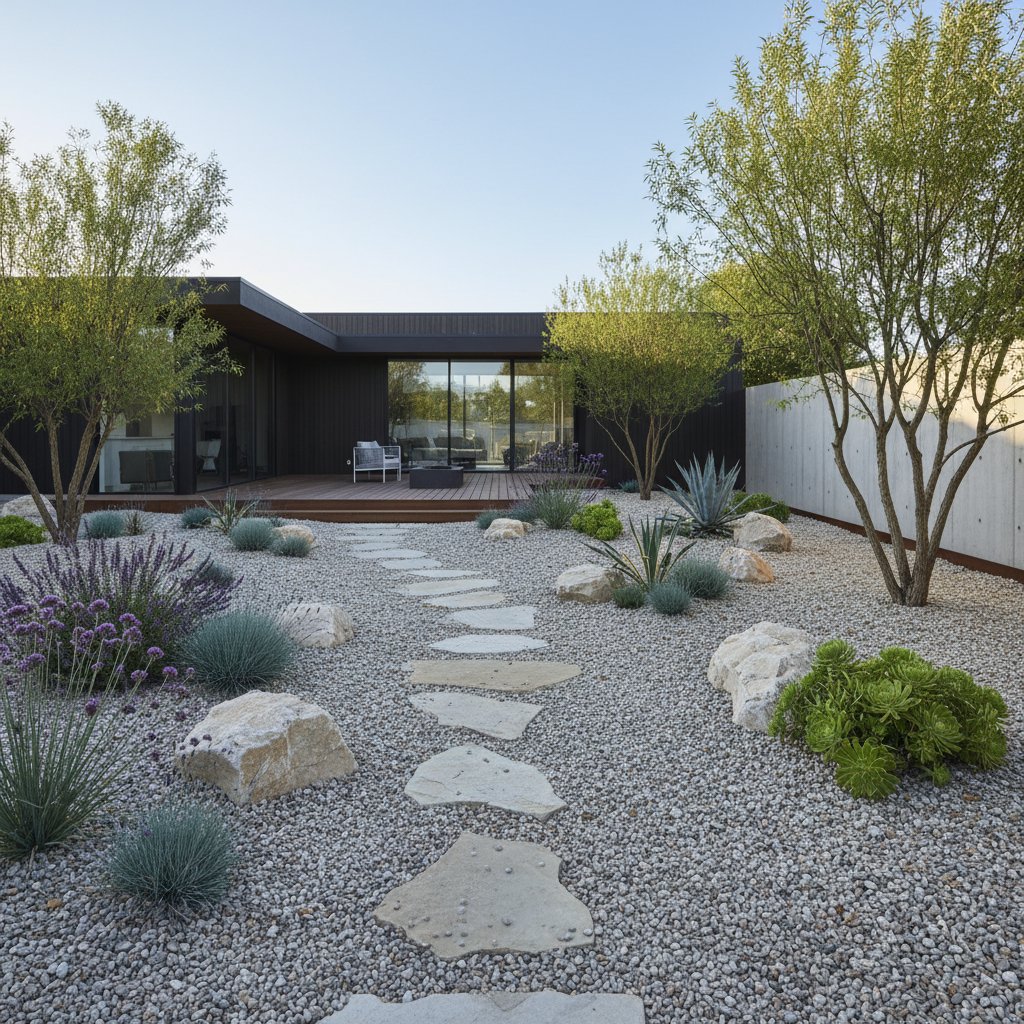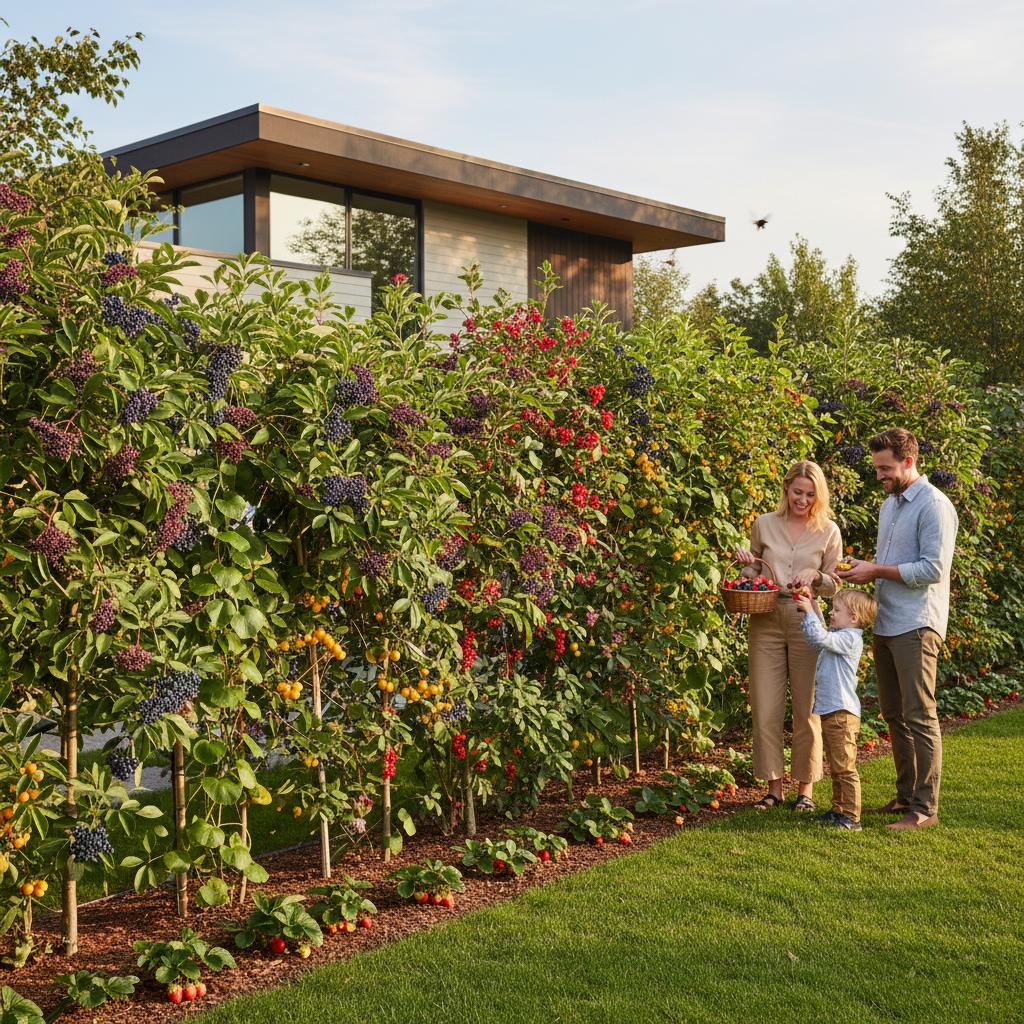Edible Hedges: Beauty and Bounty in Every Border
Consider the edges of your yard. These areas often function solely as boundaries, sometimes appearing lackluster or unkempt. Imagine transforming them into dynamic features that enhance visual appeal and provide edible yields. Edible hedges redefine borders by incorporating texture and color alongside fruits, herbs, and nuts suitable for harvest. This method integrates ornamental value with practical productivity in a cohesive living framework.
Seeing the Potential in Your Borders
Conventional hedges primarily offer privacy and structural definition. Edible hedges extend these roles with added functionality. Visualize traversing a garden path, grazing fragrant rosemary branches, or gathering ripe berries before entering the kitchen. Such borders maintain the protective and delineating qualities of traditional hedges while delivering harvestable produce.
These plantings also summon pollinators and avian visitors, cultivating a dynamic ecosystem near your residence. Bees extract nectar from blooms, and birds utilize the foliage for refuge and berries for food. Through deliberate plant choices, the hedge participates in a balanced loop that sustains human needs and environmental health simultaneously.
Assessing Your Space and Soil
Prior to planting, evaluate your site thoroughly. Observe sunlight exposure across the day, soil drainage patterns, and available space for plant maturation. Full sun and well-drained conditions favor most fruiting shrubs, whereas partial shade accommodates certain herbs and berries more effectively.
Address heavy or compacted soil by incorporating compost to enhance aeration and drainage. In arid locations, opt for drought-tolerant options such as lavender or sage, which perform well in nutrient-sparse settings. Understanding these site characteristics ensures robust growth and optimal yields from your hedge.
Test soil pH as well, aiming for levels between 5.5 and 7.0 for versatile edibles. Adjust acidic soils with lime if necessary, or add sulfur to alkaline ones, to match plant preferences and promote nutrient uptake.
Choosing the Right Mix of Plants
Incorporate variety to sustain visual appeal, productivity, and resilience throughout the year. A uniform planting of blueberries or currants succeeds in ideal conditions, but diverse combinations bolster disease resistance and extend harvest periods. Blend evergreen herbs with deciduous fruit bearers, or alternate early-season and late-season varieties for continuous output.
Consider these selections to initiate your design:
- Blueberries: Deliver vivid fruits and foliage that shifts to crimson in autumn; space 3 to 4 feet apart for air circulation.
- Currants and gooseberries: Provide tidy forms with tangy berries; ideal for cooler climates, yielding in early summer.
- Raspberries or blackberries: Create informal, textured barriers with prolific crops; support with trellises to manage canes.
- Rosemary, lavender, or sage: Supply aromatic, persistent greenery for seasoning; thrive in zones 7 through 10 with minimal water.
- Hazelnuts or dwarf fruit trees: Offer vertical diversity and sustained yields; select varieties suited to your hardiness zone for longevity.
Select species aligned with your regional climate, such as USDA zones, and evaluate mature sizes for harmonious integration. Prioritize contrasts in leaf shapes, hues, and flowering schedules to maintain year-round interest.
Planting and Early Care
Prepare planting sites by excavating a trench at least 18 inches wide and deep, allowing roots ample expansion. Position plants based on their expected spread, typically 2 to 5 feet apart depending on species, to enable natural infilling without competition. Amend backfill soil with compost at a ratio of one part to three parts native soil, then irrigate thoroughly to eliminate air pockets.
Apply a 2- to 3-inch layer of organic mulch around bases to conserve moisture and deter weeds. During initial seasons, maintain even soil moisture equivalent to 1 inch of water weekly, and perform light pruning to encourage bushy development. Permit establishment for one to two years before intensive harvesting, focusing instead on root fortification.
Monitor for pests early, using hand removal or neem oil sprays for aphids, to safeguard young growth without chemical reliance.
Keeping It Healthy and Productive
Established hedges require routine attention to sustain vigor. Prune post-harvest to eliminate spent canes and foster renewal, targeting one-third of old growth annually for berries. Promptly excise dead or infected limbs to prevent spread, inspecting monthly during active seasons.
Replenish mulch annually in spring, and apply compost or balanced organic fertilizer at a rate of 2 pounds per 100 square feet to stimulate growth. Detect stress indicators like leaf chlorosis or diminished yields, which signal pH shifts or irrigation deficits; conduct soil tests biennially for adjustments.
Encourage biodiversity by interplanting companion flowers such as marigolds to repel nematodes naturally. This proactive regimen yields not only aesthetic borders but also reliable supplies of fresh edibles for meals and preservation.
Designing for Form and Function
Edible hedges balance utility and artistry effectively. Formal clipping suits straight lines beside pathways, while natural forms complement fences or property lines. Employ double rows with taller shrubs at the rear and low herbs in front for depth and staggered harvests.
Integrate the hedge with broader garden elements for cohesion. Position blueberry rows adjacent to vegetable beds for shared pollination benefits, or align rosemary along routes to herb gardens or outdoor seating areas. Such strategic arrangements elevate the hedge as an interconnected feature that unifies the landscape.
Factor in accessibility, ensuring harvest zones remain within reach, typically under 6 feet tall, to facilitate ongoing enjoyment without ladders.
Sustaining Long-Term Yields and Enjoyment
Edible hedges evolve gradually, amplifying rewards through consistent nurturing. Seasonal shifts reveal budding flowers, maturing fruits, and whispering foliage, marking progression from saplings to robust barriers. This development underscores the value of deliberate cultivation in achieving enduring productivity.
Experiment with additions like elderberries for wildlife appeal or mint for ground cover, observing interactions with existing plants. Track performance via a simple journal, noting peak harvest dates and responses to care variations. Through active involvement, the hedge transcends mere demarcation, embodying the harmony of sustenance and splendor at your garden's perimeter.



